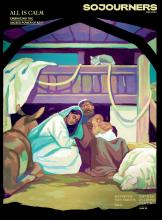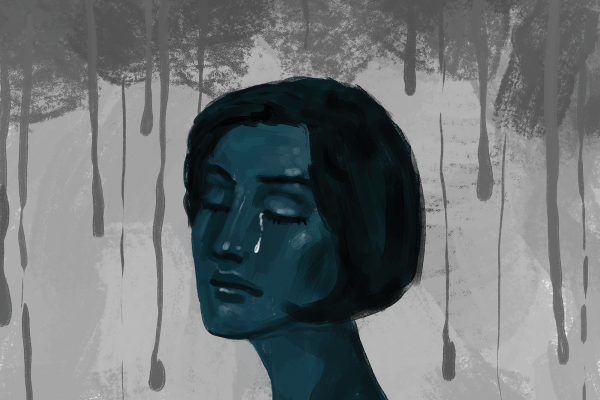IN THE 15TH CENTURY, Margery Kempe received the divine gift of weeping. When considering the multitude of spiritual powers God has bestowed — prophecy, healing, and discernment, for instance — weeping is a peculiar one. After several transformative visions, Kempe, an English laywoman and mystic, wept regularly in hourslong sessions out of contrition for human fallenness and compassion for Christ’s suffering. St. Jerome visited her to convey that God had given her a permanent “well of tears” to help others. Consequently, she developed a form of sanctifying prayer, weeping “on others’ behalf” to help liberate them from sin, purgatory, anguish, or death. Kempe’s fervor continues to demonstrate the place of tears in daily life. Even for us non-ascetics, tears express truth, helping us attune to the wisdom within and beyond us.
Some of Kempe’s contemporaries thought her weeping (which evolved into a decade of “roaring”) to be disruptive, odd, or performative. And as Oxford professor of English Santha Bhattacharji explains in her article “Tears and Screaming: The Spirituality of Margery Kempe,” those critiques continue today. Some scholars have labeled Kempe as “extreme” or “hysterical,” characterizations that ring of misogyny. Nevertheless, her practices were church-approved and part of the well-worn tradition of Christian tears. The Desert Mothers and Fathers considered crying an “official form of worship.” The Rule of St. Benedict stipulates that tears are the mark of “pure prayer.” Tears — whether quiet or loud — are expressions of the heart that connect us to divine wisdom. As Eastern Orthodox theologian Kallistos Ware writes in his article “‘An Obscure Matter’: The Mystery of Tears in Orthodox Spirituality,” “We weep [to give] expression to the intimate feelings that are ‘too deep for words.’”
Read the Full Article

